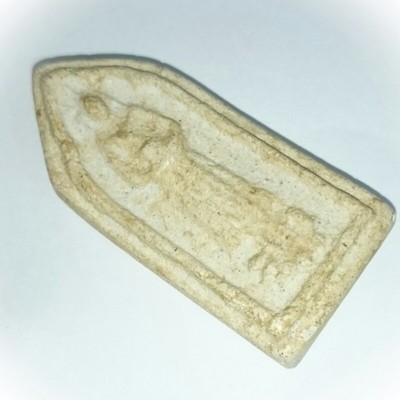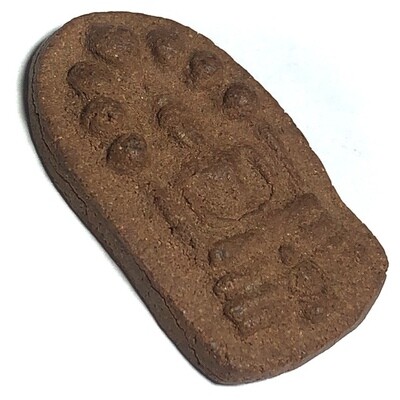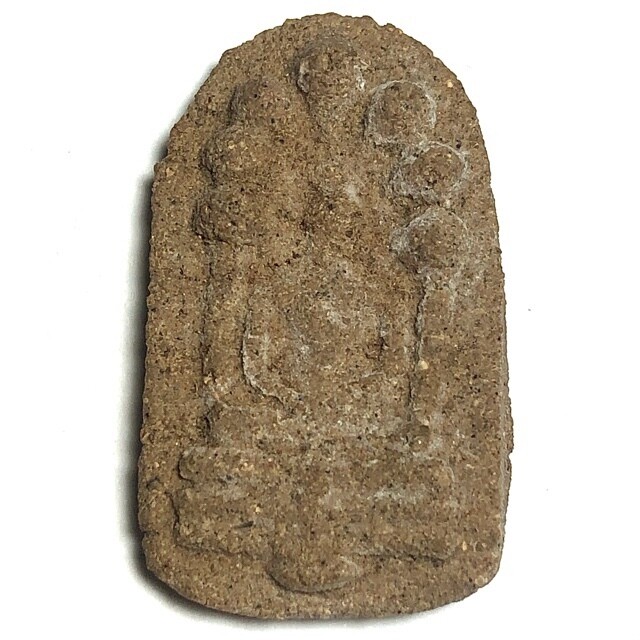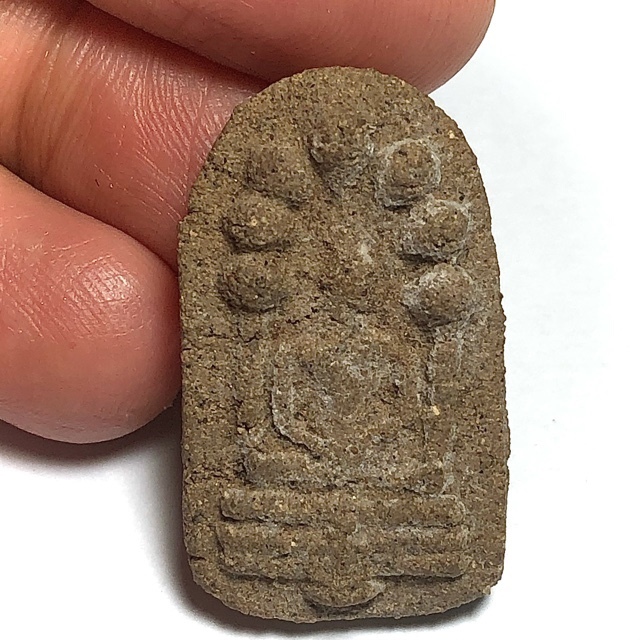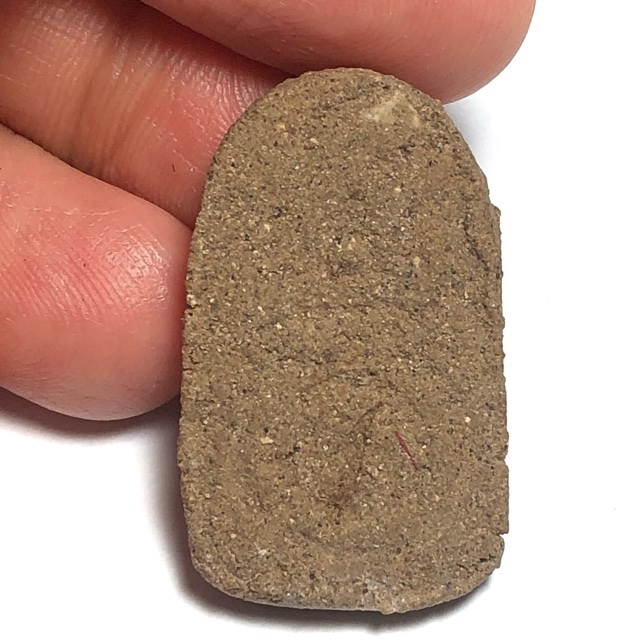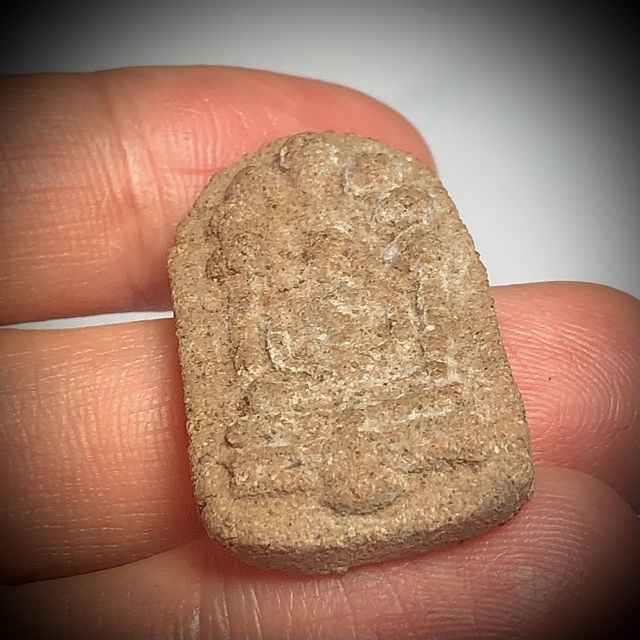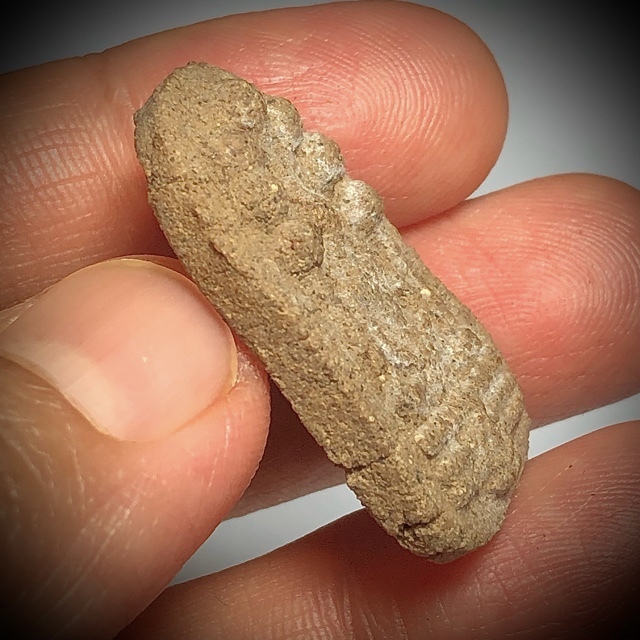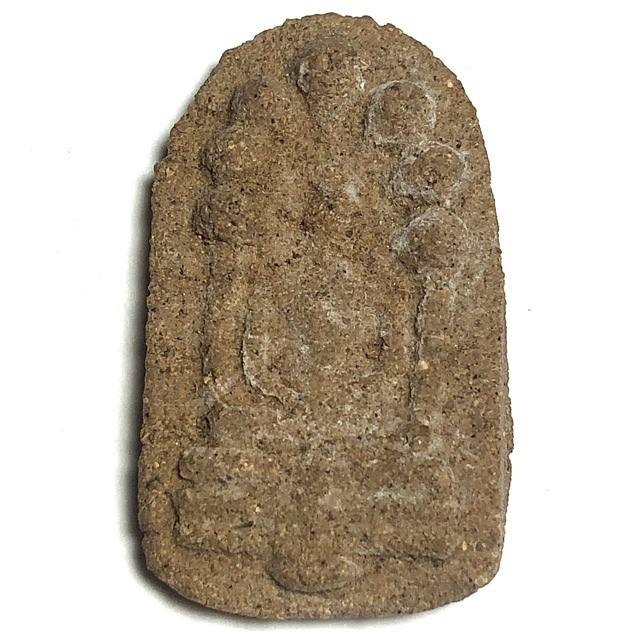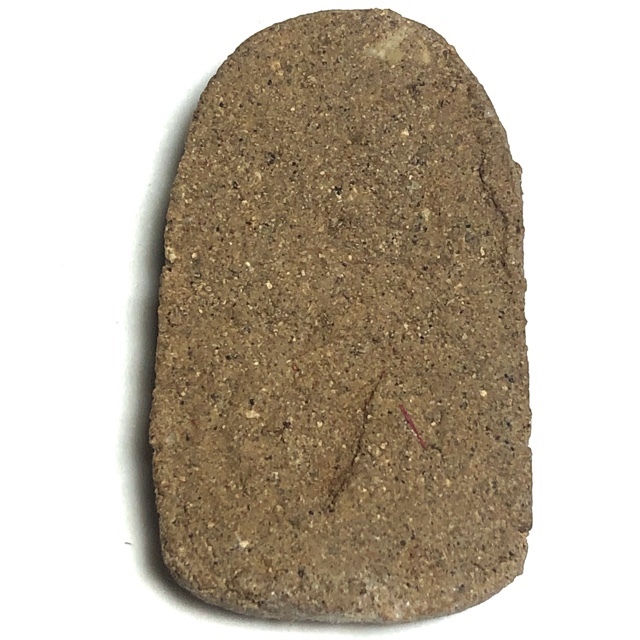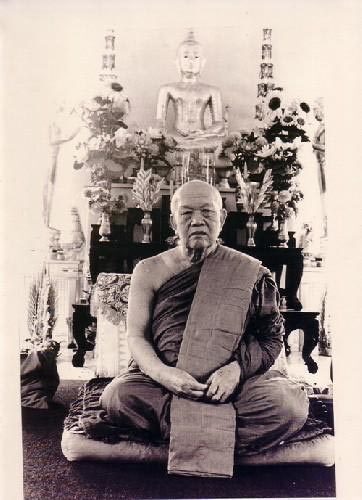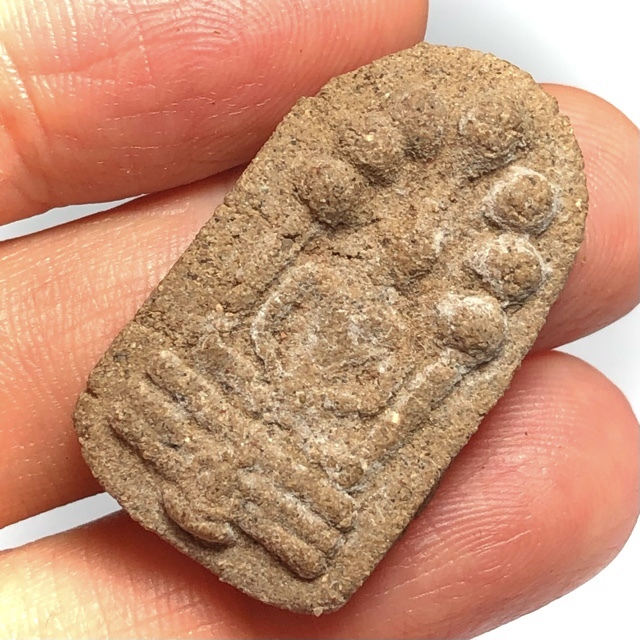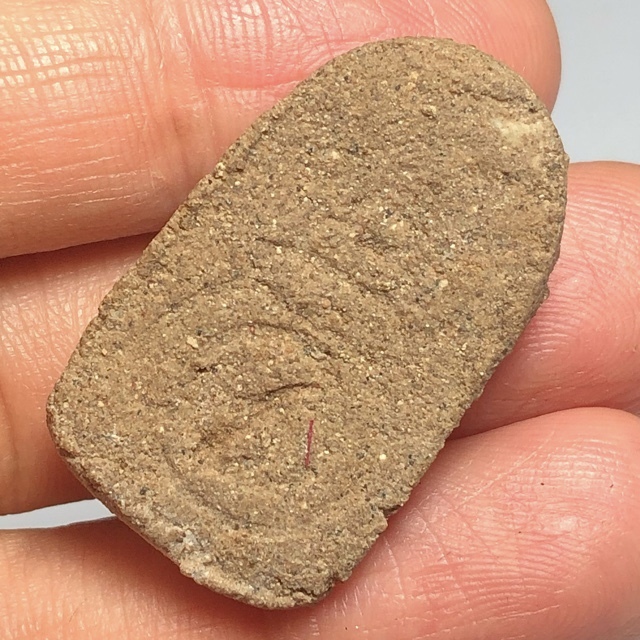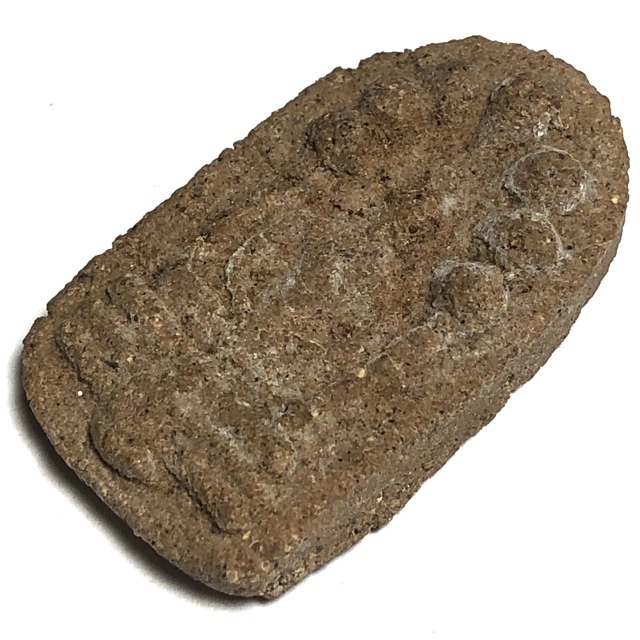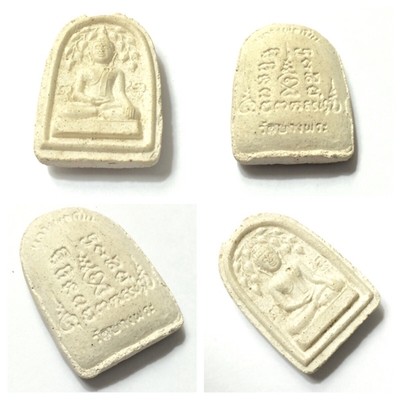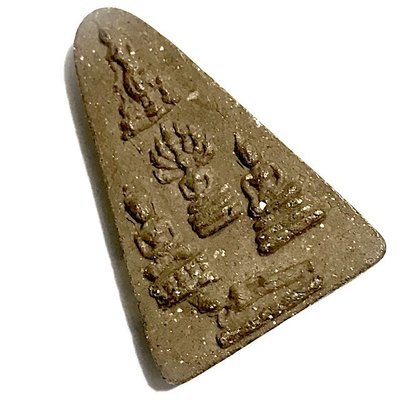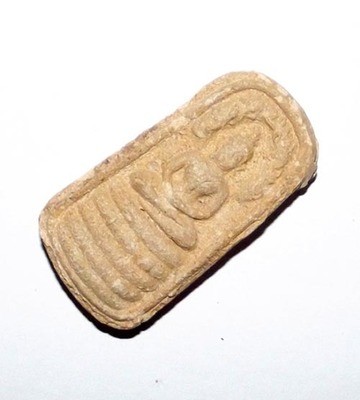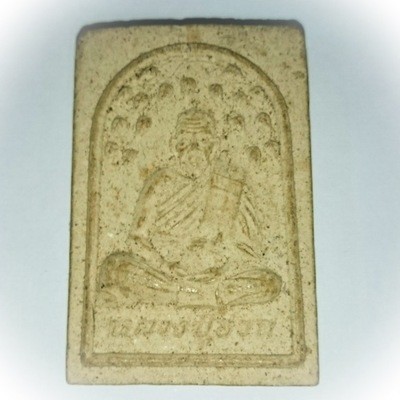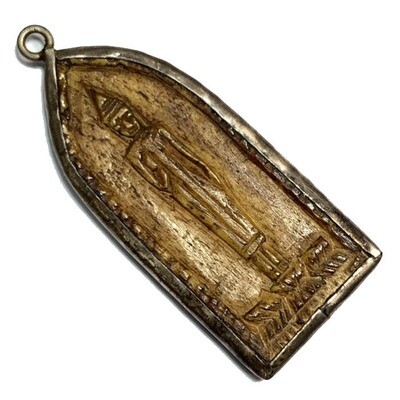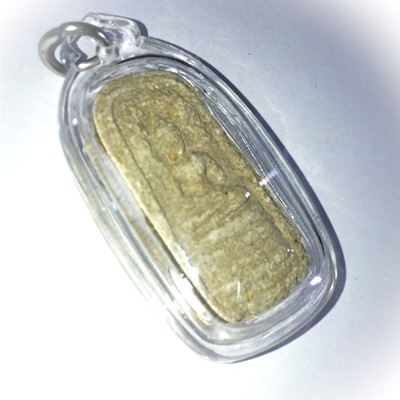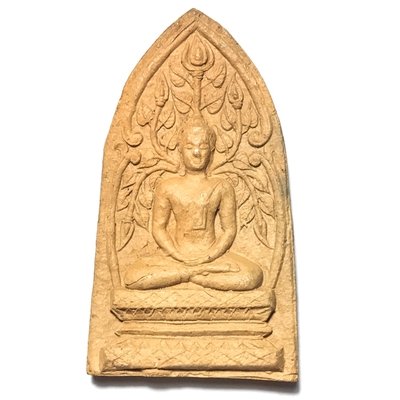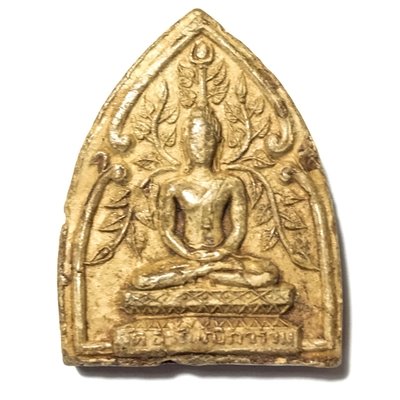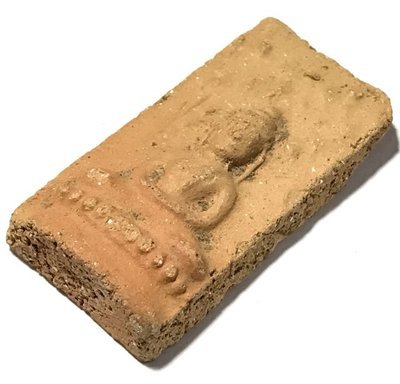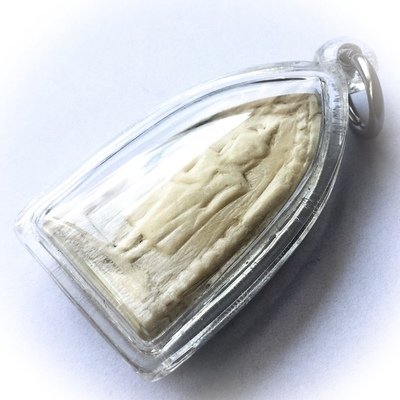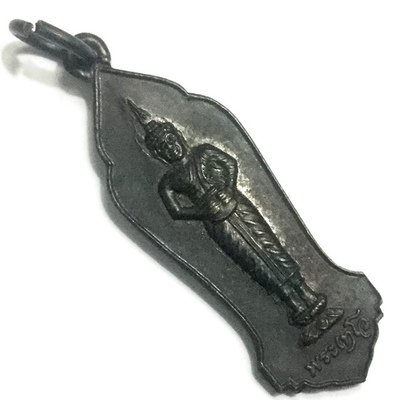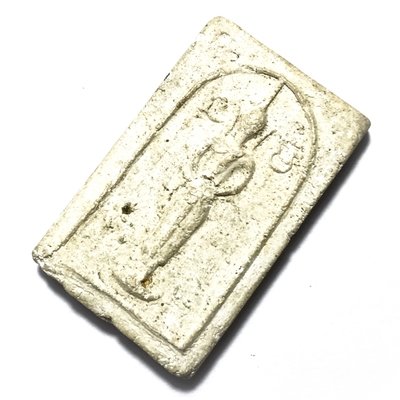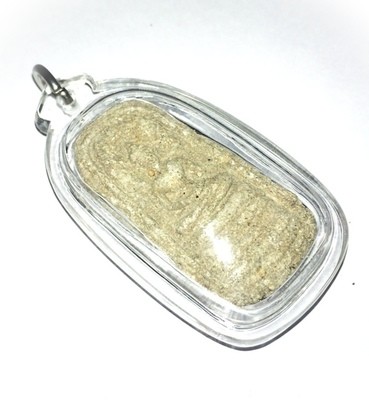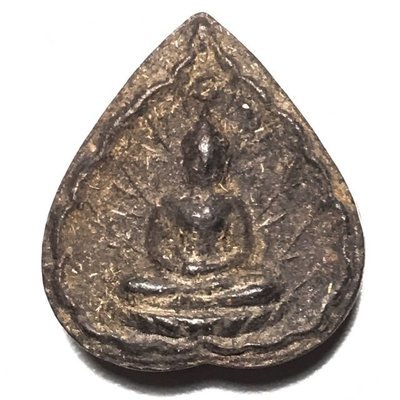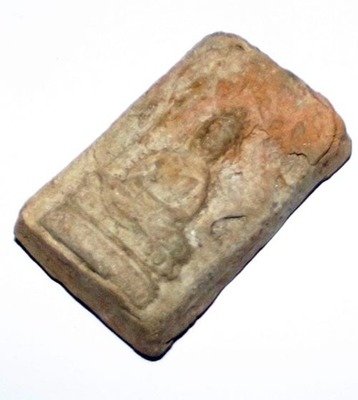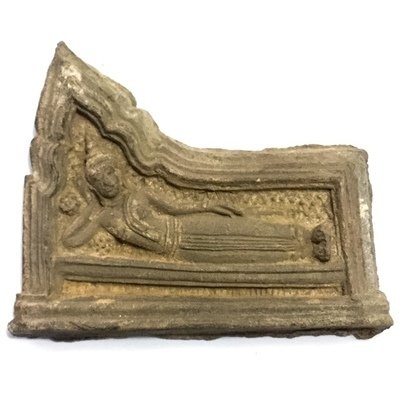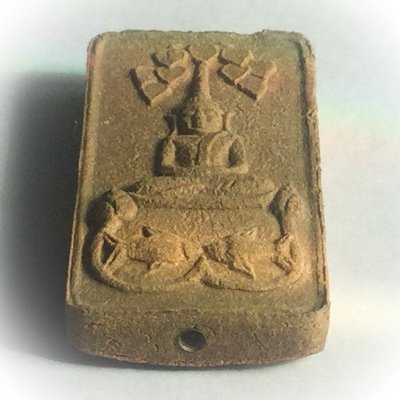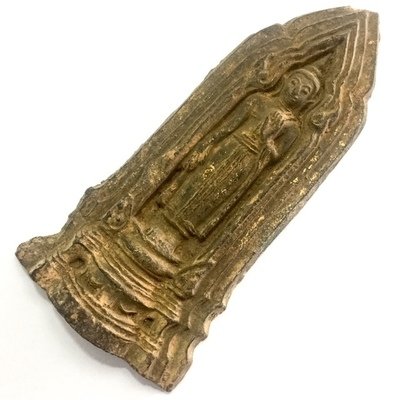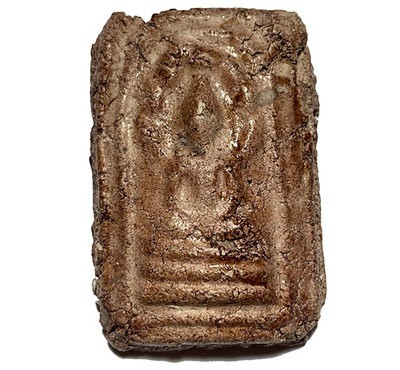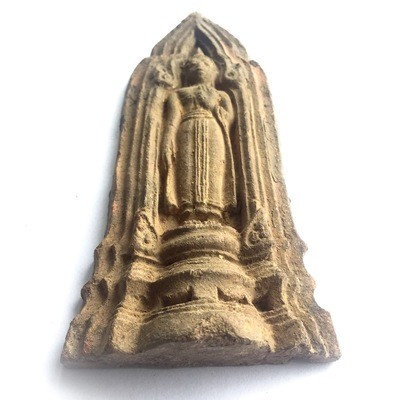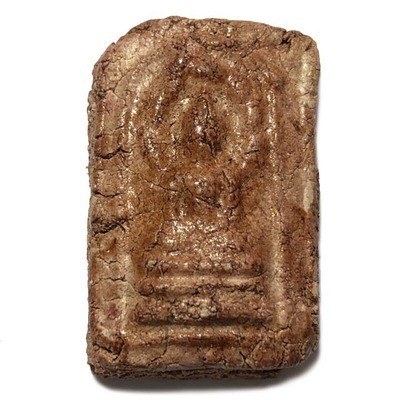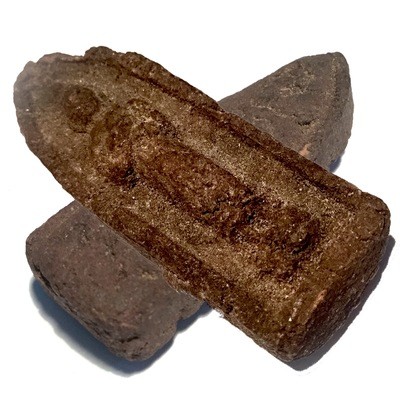Presenting a tiny but powerful and rare classic amulet from one of the Great Khao Or Masters of the 20th Century, Rian Glom Lek Hlang Chedi 2505 BE Nuea Tong Daeng Miniature Guru Monk Coin Por Tan Klai Wajasit
This Sacred amulet of the Great Khao Or Master of Nakorn Sri Tammarat, Master of Wat San Khan and Wat Pratat Noi, is a very rare amulet from Por Tan Klai’s 2505 BE Blessing Ceremony Edition, and is considered a ‘Jaek mae Krua’ type amulet (meaning ‘give to the kitchen maids and temple helpers’), which is suitable not only for men, but due to its miniature size, a perfect amulet for ladies or children to wear.

Rian Glom Lek 2505 BE Por Tan Klai Wajasit Wat Suan Khan
The 2505 BE edition of amulets of Por Tan Klai, is a highly preferred edition, which saw his famous ‘Rian Glom’ round Monk coin amulet with Chakra released, The Rian Glom Lek Hlang Chedi, and the Roop Tai Por Tan Klai Guru Monk Blesséd Photographamulets such as look om chan hmak and ya sen tobacco balls, and sacred powder amulets of various models.
A very rare and highly prized amulet for the devotees of Por Tan Klai to associate with his image and pray to him with a blessed image of the Guru, and the Chedi Relic Stupa on rear face for Buddhanussati and Marananussati. A powerful and Sacred amulet which has passed through the hands of the Guru and been blessed by him.
Por Tan Klai was one of the Top Guru Master Monks of the Last Century, and is considered one of the Four Great Masters of the Previous Generation of Lineage Masters of the Khao Or Southern Sorcery Lineage.
Kata Bucha Por Tan Klai
Pra Nakprok Pratat Phanom Tee Raleuk Sompochana Sari Rigkha Dhatu Blessing by Ajarn Fan Ajaro & Many Great Masters Wat Pratat Phanom
The Pra Nakprok Pratat Phanom Tee Raleuk Sompochana Sari Rigkha Dhatu Buddha with Naga Canopy amulet is a highly overlooked amulet of immense spiritual and significance in Thai Buddhist History. Highly recommended for those born on Saturdays.
These Historically documented amulets, were given Putt Pisek Blessing Ceremony on the 26th of December 2518 BE. This exhibit is Pim Yai measuring 3 x 2 Cm, is a highly preferred amulet of the Looksit of Ajarn Fan Ajaro, who performed the empowerment ,along with a host of other great Master Guru Monks of that era, numbering over 100 Masters present during the empowerment, including the great Luang Phu Kampant of Wat Tat Mha Chai, Luang Phu Jant of Wat Sri Taep in Nakorn Panom. Ajarn Dter, of Wat Pha Atanyawiwek (Wak Bang Klan), and many Guru Monks of the Isan Tudong Forest Tradition of LP Mun.
The Sacred Relic Stupa at Wat Pratat Phanom is a very sacred and important religious monument, that holds equal importance on both sides of the Mekhong river, in both Laos and Thailand, It is said that the temple was built around 1500 years ago, and more than 2500 pieces of sacred Buddha relics, including piece of forehead bone of the Buddha. The Chedi Stupa Relic Monument Spire at Wat Pratat Phanom has been restored up to 5 times in its lifetime, and, was damaged on the 11th August, in the year 2518 BE, creating great sadness with the devotees of Nakorn Phanom, and Nationwide.
The Royalty ordered the refurbishment of the Stupa after it broke, and a further 115 Buddha Relics Were Found inside. These amulets were created to finance, and celebrate the restoration and discovery of Buddha Relics. The restoration was performed between 2518 and 2519 BE
the blessing ceremony was performed continuously without interruption, between the 6th of December 2518, and the 1st of January 2519 BE. 17 of the highest royal monks came with the royalty to surround, protect and best of blessings upon His Majesty, and his family during the ceremony.
The head minister of the region financed and created this series of amulets, to raise the funds and celebrate the occasion and distribute to the devotees during the ceremony. Nine of the greatest monks of the time were called upon, to come to the ceremony and bring their psychic powers and enhance the empowerment of the amulets. Play empowerment was performed in front of the bodhi tree in front of the shrine room of the temple. The amulets were given a special focus on empowerment with Kong Grapan Chadtri and Klaew Klaad protective magic.
The amulets are especially popular with military officers, policemen, bodyguards, and those who have to enter into life endangering situations, such as search and rescue operations. This series was released simultaneously along with the famous metallic coin amulet 'Rian Pratat Phanom'.
The funds raised allowed the work to be performed and the restoration was finished in the year 2522 BE. This series of amulets is considered by Thai Buddhist people to be of immense significance both historically, and spiritually, for the presence of small pieces of Buddha relics within the sacred powder clay of the amulet, making this an object of high reverence and immense rarity, that is famed for its protective powers.
In addition, it is also one of the highly preferred amulets within the pantheon of the great Pra Ajarn Fan Ajaro of Wat Pha Udom Somporn, who is considered to be responsible for the most powerful magic present within these amulets, along with the presence of the Buddhist relics.
Wat Pratat Panom is the location of the Pratat Panom Chedi Stupa, located in the district of the same name, in the southern part of Nakorn Panom Province, northeastern Thailand. According to legend, this structure contains The Buddha's breast bone, and as such, it is one of the most important Theravada Buddhist structures in the region. It was originally built in the 16th century by the Laotian King Setthathirath of Lan Chang.
Each year, a festival is held in That Phanom to honor the temple. This festival lasts for one week, during which thousands of people make pilgrimages to honor the shrine. According to a Fine Arts Department marker on the site, it fell down in 1975, but was rebuilt with funds raised by public subscription, and from the government. In Thai folk Buddhism, Wat Phra That Phanom is a popular pilgrimage destination for those born in the year of the Monkey.
According to legend, this structure contains The Buddha's breast bone, and as such, it is one of the most important Theravada Buddhist structures in the region. It was originally built in the 16th century by the Laotian King Setthathirath of Lan Chang.
You can use the Below Kata to Pray to Buddha Relics to connect with the Buddha Relics at Wat Pratat Panom and Pray for Blessings, and the usual Buddhist Methods
Kata Bucha Pra Boroma Saririgatat
Ahang Wantāmi Tādtuyō Ahang Wantāmi Sappasō
Kata Namasakarn Pratat Panom
Bpurimāya Tisāya Takhināya Bpajchimāya Tisāya Udt-Dtarāya Tisāya Hēdt-Thimāya Tisāya Ubparimāya Ga Bpana Kirisming Bappadtē Mahā Gassabpēna Thābpidtang Putta Urangka Tādtu Dtung Sirasā Namāmi
Each year, a festival is held in That Phanom to honor the temple. This festival lasts for one week, during which thousands of people make pilgrimages to honor the shrine. According to a Fine Arts Department marker on the site, it fell down in 1975, but was rebuilt with funds raised by public subscription, and from the government. In Thai folk Buddhism, Wat Phra That Phanom is a popular pilgrimage destination for those born in the year of the Monkey.
